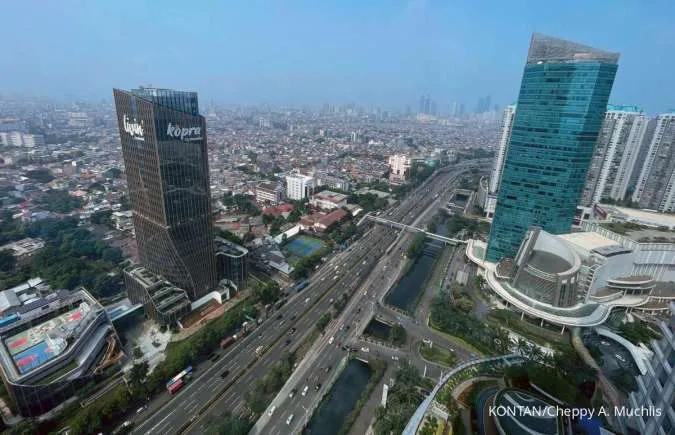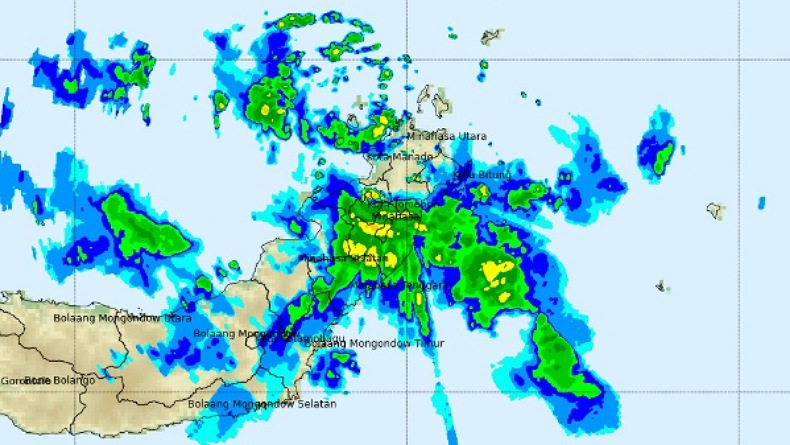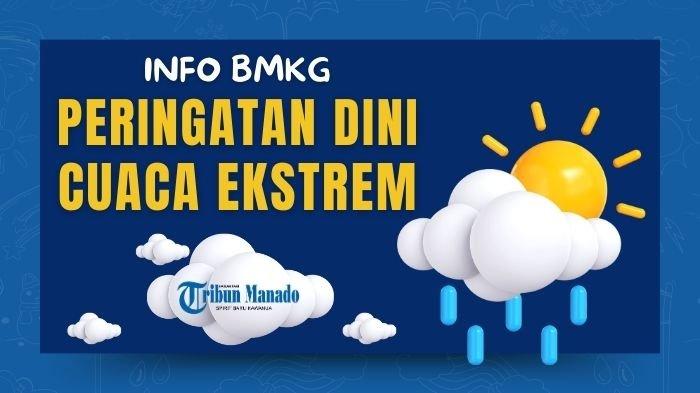The Impact Of Climate Change On Rainfall Patterns In Western Massachusetts

Table of Contents
Observed Changes in Rainfall Patterns
Increased Frequency of Intense Rainfall Events
Western Massachusetts is experiencing a noticeable increase in the number and intensity of heavy rainfall events. Data from the National Oceanic and Atmospheric Administration (NOAA) reveals a significant upward trend in rainfall intensity over the past few decades. This intensification is directly linked to climate change; a warmer atmosphere holds more moisture, leading to more powerful storms and higher precipitation rates when they occur.
- Higher risk of flash flooding: Intense rainfall overwhelms drainage systems, leading to frequent and damaging flash floods in low-lying areas.
- Increased erosion and soil degradation: Heavy downpours erode topsoil, reducing soil fertility and impacting agricultural productivity.
- Damage to infrastructure: Roads, bridges, and other infrastructure are vulnerable to damage from intense rainfall and flooding.
Changes in Seasonal Rainfall Distribution
Analysis of long-term rainfall data shows shifts in the seasonal distribution of precipitation in Western Massachusetts. Some seasons are experiencing longer dry spells, while others see more concentrated periods of intense rainfall. This altered distribution has significant implications for agriculture and water resource management.
- Impact on growing seasons: Unpredictable rainfall patterns make it challenging for farmers to plan planting and harvesting schedules, affecting crop yields.
- Increased water stress during dry periods: Longer droughts strain water resources, impacting both agriculture and municipal water supplies.
- Challenges for water management: Water managers face the dual challenge of mitigating flood risks during intense rainfall events and ensuring sufficient water availability during dry periods.
Changes in Overall Annual Precipitation
While the total annual precipitation in Western Massachusetts may not have drastically increased or decreased, the distribution of that rainfall has changed significantly. Even small changes in total annual rainfall can have significant consequences, particularly regarding snowpack, which plays a crucial role in groundwater recharge and spring runoff. These changes are often linked to broader climate patterns, such as shifts in the jet stream.
- Impact on groundwater recharge: Altered rainfall patterns affect the rate of groundwater recharge, impacting long-term water availability.
- Effects on forest ecosystems: Changes in rainfall can stress forest ecosystems, making them more vulnerable to disease and pests.
- Long-term implications for water availability: The cumulative effects of altered rainfall patterns on water resources could lead to long-term water scarcity.
Projected Future Changes Based on Climate Models
Predictions for Rainfall Intensity and Frequency
Climate models project a continued increase in the frequency and intensity of heavy rainfall events in Western Massachusetts. The Intergovernmental Panel on Climate Change (IPCC) reports highlight a high degree of certainty regarding this projection. This means we can expect more extreme rainfall events in the future, posing significant challenges.
- Increased vulnerability to flooding: Communities will face an increased risk of damaging floods, requiring significant investment in flood mitigation measures.
- Need for improved infrastructure resilience: Infrastructure must be designed and upgraded to withstand more frequent and intense rainfall events.
- Economic impacts of increased damage: Increased flooding and storm damage will lead to significant economic losses.
Predictions for Seasonal Changes
Climate projections suggest further shifts in seasonal rainfall patterns, with some seasons becoming drier and others wetter. This will have significant implications for various sectors in Western Massachusetts. The region's vulnerability to these changes is particularly pronounced in agriculture and tourism, which are heavily dependent on predictable weather patterns.
- Water scarcity concerns: Prolonged droughts will exacerbate water scarcity issues, impacting agriculture and municipal water supplies.
- Impacts on wildlife and biodiversity: Changes in rainfall patterns will stress ecosystems and affect the distribution and abundance of plant and animal species.
- Increased wildfire risk during extended dry periods: Longer dry spells will increase the risk of wildfires, threatening both property and natural resources.
Uncertainty and Limitations of Climate Projections
It's crucial to acknowledge the inherent uncertainties in climate modeling. Current models may not fully capture the complex regional variations in rainfall patterns. This emphasizes the need for ongoing research and monitoring at the local level.
- Importance of local-scale climate studies: High-resolution climate studies specific to Western Massachusetts are vital for improving our understanding of regional climate change impacts.
- Value of improving model resolution: Advances in climate modeling are needed to improve the accuracy of projections at a finer spatial scale.
- Need for adaptive management strategies: Given the uncertainties, flexible and adaptive management strategies are crucial for responding to changing conditions.
Mitigation and Adaptation Strategies
Reducing Greenhouse Gas Emissions
Global efforts to reduce greenhouse gas emissions are essential to mitigate the severity of climate change and its impact on rainfall patterns. Local actions can also make a significant contribution.
- Support for renewable energy initiatives: Transitioning to renewable energy sources reduces reliance on fossil fuels, a major source of greenhouse gas emissions.
- Energy efficiency measures: Improving energy efficiency in buildings and transportation reduces overall energy consumption and emissions.
- Sustainable transportation options: Promoting public transportation, cycling, and walking reduces reliance on vehicles that generate greenhouse gas emissions.
Adapting to Changing Rainfall Patterns
In addition to mitigation efforts, adapting to the projected changes in rainfall patterns is crucial. This requires a multi-faceted approach, including improved water management and infrastructure upgrades.
- Investing in flood control infrastructure: Upgrading drainage systems and building flood defenses can reduce the risk of damage from intense rainfall.
- Developing drought-resistant crops: Farmers can adapt by selecting crop varieties that are more tolerant to drought conditions.
- Improving water storage and conservation: Investing in water storage facilities and implementing water conservation measures can help ensure sufficient water availability during dry periods.
Conclusion: Understanding the Impact of Climate Change on Rainfall Patterns in Western Massachusetts
Observed and projected changes in rainfall patterns in Western Massachusetts clearly demonstrate the significant impact of climate change on the region. These changes pose serious challenges for agriculture, infrastructure, the economy, and the environment. Addressing these challenges requires a combination of mitigation strategies to reduce greenhouse gas emissions and adaptation strategies to prepare for the inevitable changes in rainfall patterns. Stay informed about the latest research on the impact of climate change on rainfall patterns in Western Massachusetts and take action to support sustainable practices within your community. Understanding and addressing the impact of climate change on rainfall patterns in Western Massachusetts is critical for ensuring the region's future prosperity and environmental health.

Featured Posts
-
 Prakiraan Cuaca Bali Besok Berawan Hujan Ringan Di 5 Daerah
May 28, 2025
Prakiraan Cuaca Bali Besok Berawan Hujan Ringan Di 5 Daerah
May 28, 2025 -
 Update Cuaca Jawa Barat Hujan Di Bandung Hingga Petang 23 April 2024
May 28, 2025
Update Cuaca Jawa Barat Hujan Di Bandung Hingga Petang 23 April 2024
May 28, 2025 -
 Bon Plan Samsung Galaxy S25 256 Go 5 Etoiles A 699 90 E
May 28, 2025
Bon Plan Samsung Galaxy S25 256 Go 5 Etoiles A 699 90 E
May 28, 2025 -
 Jawa Timur Peringatan Hujan Lebat Pagi And Malam 6 Mei 2024
May 28, 2025
Jawa Timur Peringatan Hujan Lebat Pagi And Malam 6 Mei 2024
May 28, 2025 -
 Samsung Galaxy S25 Ultra Offre Exceptionnelle A 13
May 28, 2025
Samsung Galaxy S25 Ultra Offre Exceptionnelle A 13
May 28, 2025
